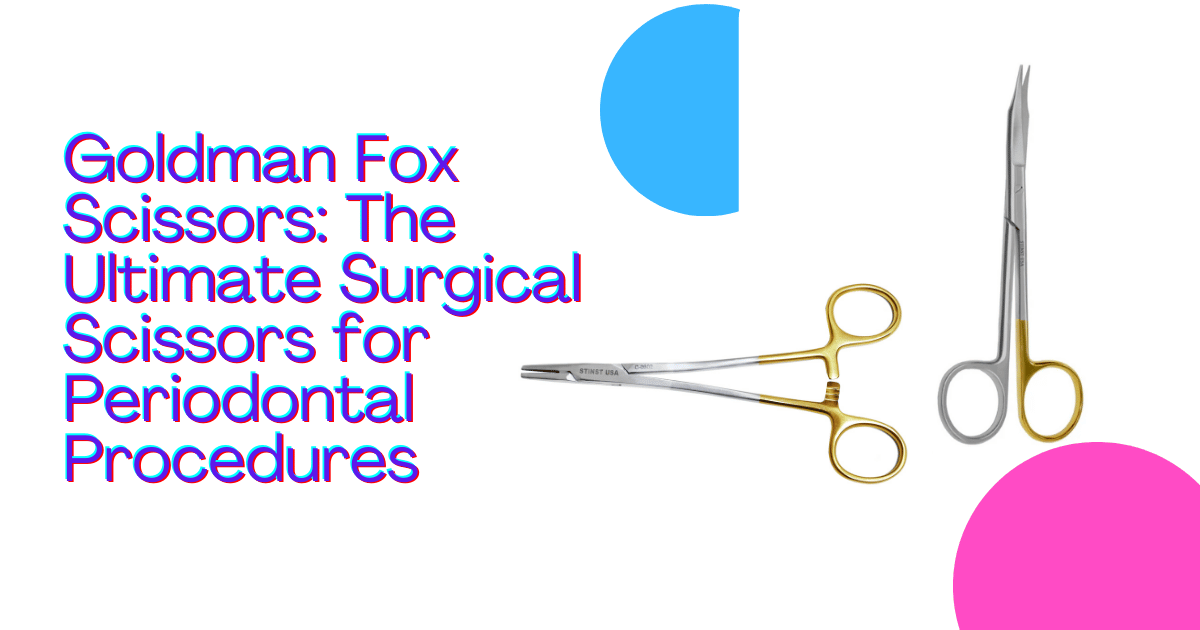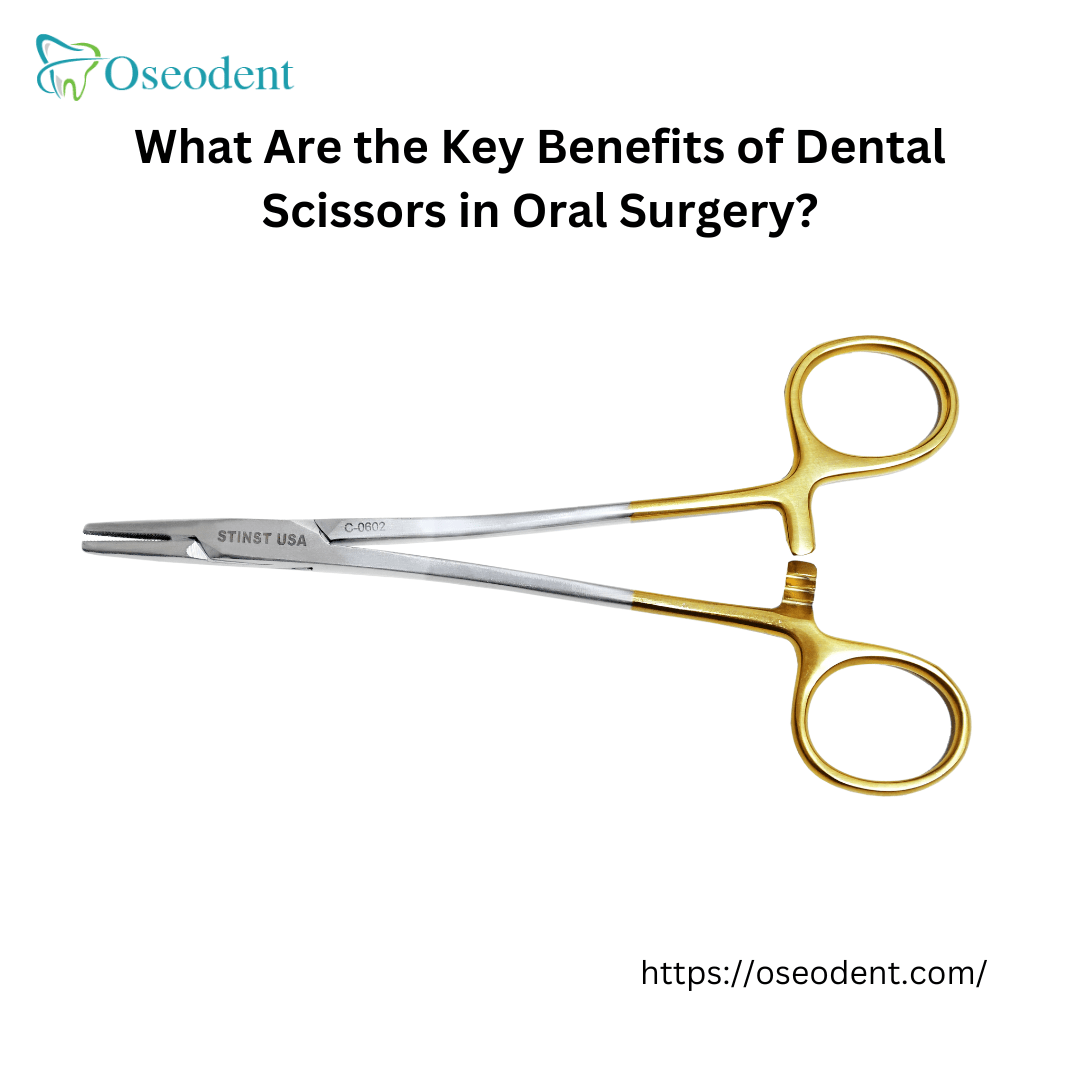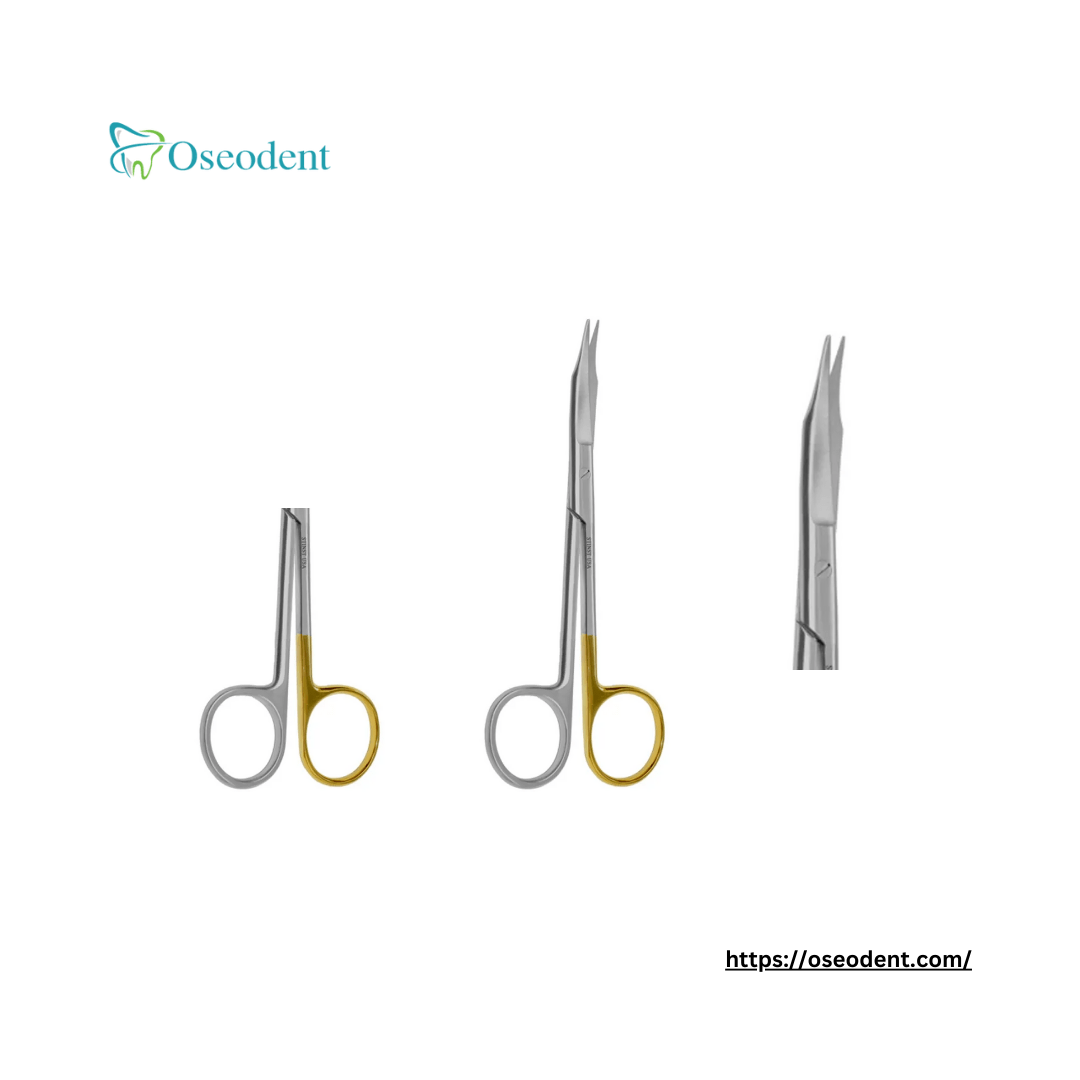Versatility is the hallmark of using dental scissors as part of any kit of a dentist. Those special tools come in different designs; each is suited to performing different tasks, hence making it an essential component in dental care. They make ideal stools for trims on soft tissues or adjusting crowns and bridges or working on fragile prosthetics.
In this blog, we are going to guide and talk about all the types of dental scissors used by the dental professionals, like Dean scissors, crown and bridge scissors, tissue scissors, scissors with teeth, and crown and collar scissors, through which dental procedures can be successfully practiced.
What Are Dental Scissors?
Best Dental scissor are surgical instruments specifically made to cut different materials used in dental treatment. Due to their specialized use in dentistry, they are made to cut through soft tissues, rubber material of the dam, sutures, or any other material used in making crowns and bridges. Dental scissors are equipped with sharp edges of cutting and are needed for both surgical and restorative procedures to be followed exactly and without traumatizing the tissues involved..
Dean Scissors: Precision for Soft Tissue Surgery

One of the most common scissors is Dean scissors. These are curved scissors and mostly utilized in oral surgeries where soft tissues have to be cut around the locations around the gingiva or gum. The curved shape of Dean scissors favors it as a useful tool that can easily move more comfortably within the mouth to places which become very constricted or hard to access.
The sharpness of the blades makes it easy for Dean scissors to cut clean thereby reducing the chances of tissue damage or excessive bleeding. They tend to be used by dentists in procedures such as gingivectomy, soft tissue biopsies, and the preparation of the gums before placing prosthetics. Their cutting ability gives them a high spot among the instruments used to achieve proper contouring of the gums toward healing and comfort.
Crown and Bridge Scissors: Shaping Restorations with Accuracy

Crown and bridge scissors are standard tools used within any dental office to cut and adjust metal, ceramic, or composite resin crowns and bridges and to make adjustments to guarantee that the restorations will blend naturally with the contours of the patient’s teeth and gum line. The crown and bridge scissors are valuable instruments for preparing crowns and bridges so they can be temporarily applied between appointments, making patients comfortable until the final restorations. Thereby clean-cut, with the crown and bridge scissors, create life-like outcomes that not only fit, but look normal and really function very well to bring aesthetic enhancement and comfort to a patient’s smile. Proper use of these scissors will ensure achievement of the best dental results.
Tissue Scissors: Careful Cuts for Soft Tissue Management
Tissue scissors are actually the instruments used most in many dental procedures when dealing with the management of soft tissue and cutting. They are designed for cutting soft tissues such as gingiva, mucous membranes, and connective tissues with minimal trauma.
The tissue scissors are mainly used for surgeries including the extraction of the teeth, periodontal procedures, or other soft tissue grafting. Such tissue scissors have extremely sharp edges. These allow for clean cutting with precision that reduces the hemorrhagic risk and promotes better healing. Ergonomically, these tissue scissors tend to be more ergonomic than ordinary scissors. This enhances the possibility of control retention by the dentist with regards to delicate surgical practices.
Because gingiva and other oral tissues are sensitive, tissue scissors have to handle these materials with tact. There is then less unnecessary damage to tissue, hence a better post-surgery outcome for the patient.
Scissors with Teeth: Serrated Edge for Better Grip

For tougher materials, sometimes teeth scissors are used that go by the popular name of best scissors with teeth. They have serrated edges to provide a better grip hold on the material to be cut. This comes in very handy when tough and fibrous tissues like rubber dam material or thicker dental sutures are involved.
Scissors are designed to have a serrated design with teeth that will not displace the material being cut. Using scissors with teeth, the dentist can easily trim a strong suture or a rubber dam within the process to provide better control and avoid accidents or complications with the treatment.
Crown and Collar Scissors: Adjusting Restorations with Precision
For every dental practitioner and technician dealing in dental crowns and other restorative types of prosthetics, crown and collar scissors are very essential. Scissors use specifically is trimming and changing the collars or edges of crowns to fit the patient’s tooth appropriately. Regardless of whether one was using metal, ceramics, or composite, these scissors cut down with absolute precision without causing any form of damage to the material.
The crown fit accurately with the right cutting ability of crown and collar scissors to the tooth structure, that would be very important for the long-term success of the restoration. An ill-fitting crown could cause discomfort, food impaction, and eventually some oral health problems. With the use of crown and collar scissors, the dentist may get a very accurate and comfortable fit for the patient and hence the restoration will function very well and for a longer period of time.
Conclusion: The Versatility and Precision of Dental Scissors
No dentist should miss the dental scissors because they are essentials which achieve precision, accuracy, and control in most dental procedures. Some of the scissors used include Dean scissors, which are used on soft tissue surgery, while crown and bridge scissors will fine-tune the dental restorations and tissue scissors take charge of delicate soft tissues.
They include scissors with teeth and crown and collar scissors, which would allow dentists to adjust crowns, bridges, and other dental materials very precisely. The dental professionals, with proper dental scissors within their care, would ensure that procedures are carried out at the highest level of care, which in turn would result in better outcomes and satisfaction among patients.
Whether you are a dentist seeking new additions to your kit or a patient curious about the tools that fill your dental chair, it becomes obvious that dental scissors are far more than just a simple cutting tool-they are critical instruments in shaping a healthier, more beautiful smile.
FAQ’s
What are dental scissors used for in dentistry?
Dental scissors are specialized tools designed to cut various materials used in dental procedures. They are used to cut soft tissues, sutures, rubber dam materials, and components in crowns and bridges. These scissors provide dentists with precision and control during surgeries, restorations, and other dental treatments.
How do Dean scissors differ from other dental scissors?
Dean scissors are curved and are mainly used for soft tissue surgeries around the gums or gingiva. The curved shape allows dentists to easily access difficult areas in the mouth. Their sharp blades ensure clean cuts with minimal tissue damage or bleeding, making them ideal for precise soft tissue procedures.
What are crown and bridge scissors used for?
Crown and bridge scissors are used to trim and adjust crowns and bridges made from metal, ceramic, or composite resin. These scissors help ensure that restorations fit seamlessly with the patient’s teeth and gum line, resulting in a natural and functional appearance.
Why are tissue scissors important in dental surgery?
Tissue scissors are crucial for cutting soft tissues like gingiva, mucous membranes, and connective tissues with minimal trauma. Dentists use them in procedures such as tooth extractions, periodontal surgeries, and soft tissue grafting. Tissue scissors help promote better healing and reduce the risk of complications.
What makes scissors with teeth different from regular dental scissors?
Scissors with teeth have serrated edges that provide a better grip on tougher materials, like rubber dam material or thicker dental sutures. The serrated design ensures that the material doesn’t slip, giving the dentist better control and precision during cutting.
How do crown and collar scissors improve dental restorations?
Crown and collar scissors are specifically designed to trim and adjust the edges or collars of crowns, ensuring they fit perfectly on the patient’s tooth. This helps avoid discomfort, food impaction, or other oral health issues caused by ill-fitting crowns, leading to better long-term restoration success.
Are dental scissors safe to use during oral surgery?
Yes, dental scissors are designed to be safe and precise. Their sharp edges and ergonomic design allow dentists to make accurate cuts without causing unnecessary damage to surrounding tissues. This reduces the risk of complications during surgery.
Can dental scissors help achieve better post-surgery outcomes?
Absolutely. Dental scissors are essential for making clean cuts with minimal trauma, leading to less bleeding, faster healing, and better post-surgery outcomes. This is especially important in delicate procedures like soft tissue management.
What types of dental scissors should a dentist have in their toolkit?
A well-equipped dental toolkit should include a variety of scissors: Dean scissors for soft tissue surgery, crown and bridge scissors for restoration adjustments, tissue scissors for cutting soft tissues, scissors with teeth for tougher materials, and crown and collar scissors for precise fitting of dental crowns.
How can dental scissors improve a patient’s comfort during dental procedures?
Dental scissors improve patient comfort by ensuring clean and precise cuts. This minimizes discomfort, reduces bleeding, and promotes quicker healing, leading to a smoother recovery for the patient during and after dental procedures.














